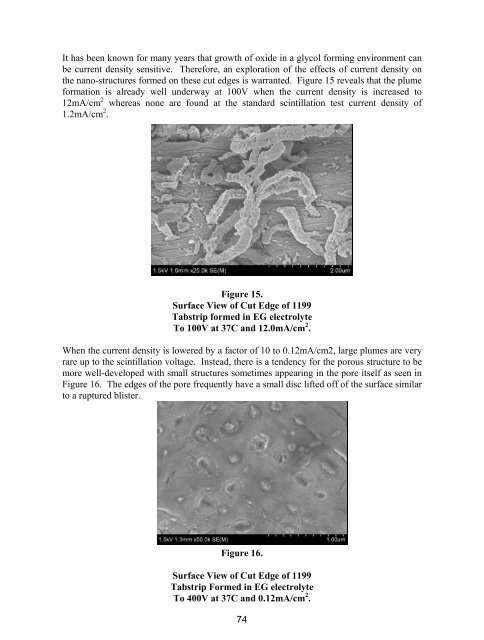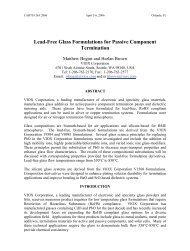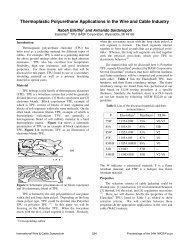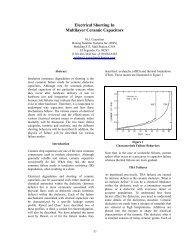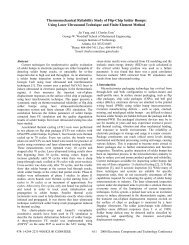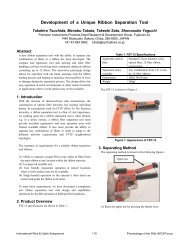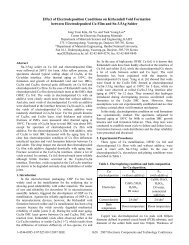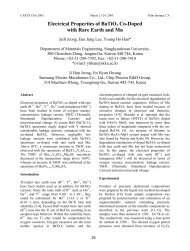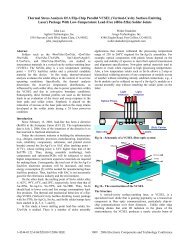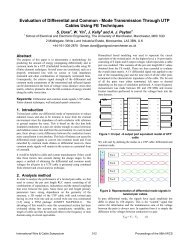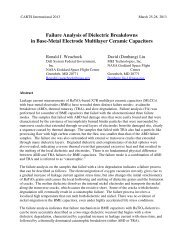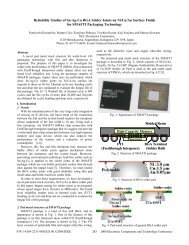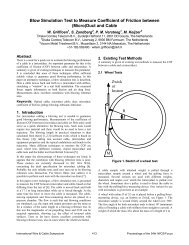Dielectric Aluminum Oxides: Nano-Structural Features and ...
Dielectric Aluminum Oxides: Nano-Structural Features and ...
Dielectric Aluminum Oxides: Nano-Structural Features and ...
You also want an ePaper? Increase the reach of your titles
YUMPU automatically turns print PDFs into web optimized ePapers that Google loves.
It has been known for many years that growth of oxide in a glycol forming environment can<br />
be current density sensitive. Therefore, an exploration of the effects of current density on<br />
the nano-structures formed on these cut edges is warranted. Figure 15 reveals that the plume<br />
formation is already well underway at 100V when the current density is increased to<br />
12mA/cm 2 whereas none are found at the st<strong>and</strong>ard scintillation test current density of<br />
1.2mA/cm 2 .<br />
Figure 15.<br />
Surface View of Cut Edge of 1199<br />
Tabstrip formed in EG electrolyte<br />
To 100V at 37C <strong>and</strong> 12.0mA/cm 2 .<br />
When the current density is lowered by a factor of 10 to 0.12mA/cm2, large plumes are very<br />
rare up to the scintillation voltage. Instead, there is a tendency for the porous structure to be<br />
more well-developed with small structures sometimes appearing in the pore itself as seen in<br />
Figure 16. The edges of the pore frequently have a small disc lifted off of the surface similar<br />
to a ruptured blister.<br />
Figure 16.<br />
Surface View of Cut Edge of 1199<br />
Tabstrip Formed in EG electrolyte<br />
To 400V at 37C <strong>and</strong> 0.12mA/cm 2 .<br />
74


